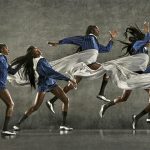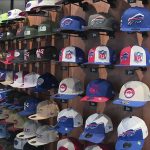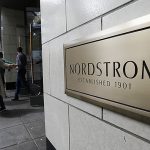While the U.S. consumer appears to have finally been awakened from a deep slumber induced by the economic woes and market crash in late 2008, they have apparently also done so with a new attitude about where to shop and what to buy.
This last holiday season — and the period that has followed — was also a reflection of the uneven nature of the fragile economic recovery in the U.S. Wealthier consumers have gotten back to the business of shopping like it was 1999, while lower- to middle-income consumers are finding it hard to get back to the care-free spending habits of the pre-recessionary period.
Yes, the stock market is up, providing working Americans with a better feeling about their “wealth effect,” but stagnating-to-falling housing prices eat into the positive attitude that comes with rising 401(k) portfolio positions (that still fall short of pre-crash levels).
The effect on the retail landscape has been profound, with the luxury and specialty segments posting very solid gains in the market in 2010 while the discount/mass sector was challenged by continued high unemployment, inflationary pressure on staples, high gas prices and the stagnating economy’s impact on their consumers’ ability to spend. One clear outcome of this last recession is the consumer’s further move to quality and product purchases as an investment. The brand has to be trusted. The product needs to last. And the brands that build trust through innovation, quality and value established stronger bonds with the consumer over the last two years.
Those observations, and many more, are contained in the 2011 Brand Strength Report, the annual output of a consumer survey conducted by The SportsOneSource Group to measure the consumer’s attitudes towards active lifestyle brands.
The most recent report was developed to measure footwear and apparel brands. The centerpiece of the Brand Strength Report, or BSR, is the Brand Strength Index, a rating system developed in early 2009 by The SportsOneSource Group in an effort to more effectively measure the overall consumer perception of a specific brand. Each brand measured was tested across four main criteria, with those criteria each individually weighted to reflect their importance in the overall indexing formula.
Two key factors influencing the Brand Strength Index focused on awareness: unaided awareness and aided awareness. In an effort to measure a brand’s mindshare, the survey respondents were first asked to name five footwear or apparel brands in the sports or outdoor sector. Respondents were then provided a list of 64 brands and asked about awareness levels for each.
The next factor measured in the study and used to formulate the Brand Strength Index (BSI) was a respondent’s likelihood to purchase a specific brand again in the future. For each brand that a respondent mentioned having purchased in the last year, the respondent was asked on a scale of 1 to 5 — with 1 representing “Definitely Would Not” and 5 representing “Definitely Would” — how likely they would be to purchase that specific brand again in the future. Brands earned points for positive responses while points were subtracted for negative responses.
The attribute with the highest importance in the BSI formula was based on the researchers’ attempt to measure a consumer’s uncompromising commitment to a brand. Respondents were first asked if they would leave a specific retailer if a particular brand was not offered. The respondents that answered “Yes” were then asked (unaided) which brands were so important to them that they would leave a retailer if that brand were not available.
All four criteria were then combined using a proprietary formula (see page 4) to generate a single Brand Strength Index for each qualifying brand.
The Nike brand was at the top of the BSI ratings by a wide margin again this year, but separated itself a bit from the #2 brand, Adidas, in the latest report. Nike’s dominant position reflects overwhelming consumer brand awareness, both aided and unaided, due in large part to the massive spending on marketing, or what Nike, Inc. refers to as “demand creation.”
Nike’s BSI score remained consistent with the results of the 2010 Brand Strength Index, improving 7.0 BSI points in 2011 versus the 2010 BSI score for the brand. This is an indication that even in the tough economy — or perhaps because of it — Nike has been able to maintain its dominance in consumers’ mindshare.
Adidas followed Nike with a BSI score of 620.6, almost 120 points lower than Nike, a widening gap versus scores published in the 2010 Brand Strength Report. Last year’s point differential between Nike and Adidas was 100 BSI points.
Reebok made another big move in the latest report on top of a fair move up in the 2010 report.
The Reebok brand, also referred to as “RBK” in some product lines, leap-frogged New Balance into the #3 spot in the 2011 Brand Strength Index, an increase of nearly ten points versus the 2010 report, thanks to its strong showing in the toning category and its push into running and other technical categories with the ZigTech product.
Perhaps the most interesting data points for the Reebok brand is its gains on the male side of the business, which exceeded the score gains on the female side.
Puma was the other big mover in the 2011 report, jumping four spots in the index rankings, thanks to a 25 BSI point jump versus the 2010 report. The Jordan brand, another of the Nike, Inc. stable of brands, moved into the Top 10 on the Brand Strength Index for 2011, gaining over 16 BSI points to capture the #7 spot just ahead of the Converse brand, another Nike Inc. property.
Skechers also moved into the Top 10 on the Brand Strength Index, capturing the #10 position, thanks largely to its strong showing in the toning category the last two years.
When assessing brand strength at the gender demographic, the report pays particular attention to the attitude of women with children, due to the influence mothers have on purchases of footwear for their children — particularly in a tough economy when household budgets are tight. This partially explains the high rating the Jordan brand has with female consumers even though the brand is primarily focused on the 12- to 24-year-old male consumer.
Reebok, New Balance and Jordan were the only brands in the Top 10 with an overall BSI score for all female consumers equal to or higher than their score with female consumers aged 13- to 24-years-old.
The Brand Strength Index numbers change quite a bit when assessing the results for younger consumers aged 13 to 24-years-old, both for a brand’s individual score and the ranking of the brands. The top two brands, Nike and Adidas, remain the same, but see their scores increase significantly with the young consumer. Under Armour moves into the third spot with a young consumer BSI score nearly 50 points higher than their overall BSI score. Reebok is in the #4 spot ahead of a surging Puma that captured the #5 spot and pushed The North Face out of the top five BSI scores for the Young Consumer.
Reebok, New Balance and Skechers are the only Top 10 brands that scored lower with the Young Consumer demographic group than the overall Brand Strength Index.
Jordan, Converse, The North Face, Vans and New Balance round out the Top 10 brands in the Young Consumer BSI. Brands like DC, Tapout, Hurley, Volcom and Billabong move into the Top 25 with Young Consumers.
In the assessment of a move to quality and value, the 2011 Brand Strength Report also looks at the consumer’s perception of key brand attributes. Exemplifying this observation is the fact that brands such as Under Armour, The North Face and Nike held the top three spots for brands that were perceived to have more Value for the Price.”
NOTE: Look for more information regarding the 2011 Brand Strength Report in next week’s issue of Sports Executive Weekly, when SEW takes a deeper look at consumer purchase decision ratings by key attribute.









